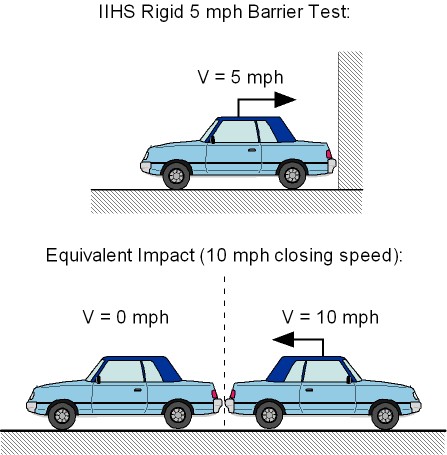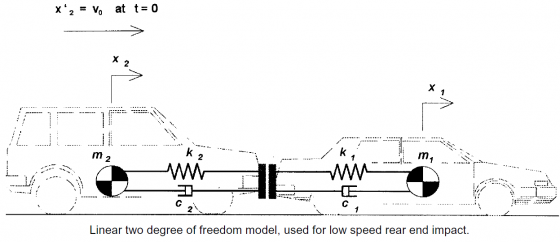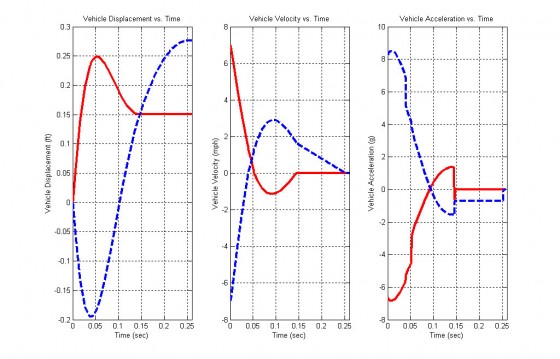Vehicle impact severity has been used to infer whiplash injury to asymptomatic, healthy occupants during low-speed, rear-end collisions. However, vehicles speeds at impact are sometimes difficult to determine because existing crush formulas are not always applicable over certain ranges of closing speed. An alternative method for determining impact speed and severity that has been pioneered by Technology Associates to determine accident severity in those cases makes use of low speed crash test data. Our algorithm compares the damage done to vehicles in staged low-speed collisions. Then, by combining a linear two degree of freedom impact response model, named LOw SPeed Rear-end Impact (LOSPRI) with an understanding of the Consumer Union (CU), Insurance Institute for Highway Safety (IIHS) and other bumper tests, such a comparison can be used to determine the likely range of impact speeds and severities associated with a particular impact.

For example, Consumer Union operates a hydraulically driven, rigid “bumper basher” which is used to simulate one vehicle striking another vehicle 3-5 mph. Insurance Institute for Highway Safety on the other hand tests vehicles by propelling them frontward and rearward into a contoured, bumper-like immovable barrier at 10 mph. While these testing procedures may appear similar for a given speed, they are quite different in their severity and the damage that they cause to a given vehicle. Therefore, the severity of each test must be quantitatively evaluated by parameters such as impact energy and peak vehicle acceleration/contact force. With use of the LOw SPeed Rear-end Impact (LOSPRI) model, actual damage reported from a low speed accident can be compared to available bumper testing damage data to determine the impact severity for both vehicles, relative to the various bumper test procedures.

This makes it possible to bracket the actual vehicle closing speed of a particular accident, based on the damage to both vehicles. Once the minimum or maximum closing speed is known, LOSPRI can be used to determine the Delta-V of the struck vehicle for comparison with surrogate test data, to evaluate the likelihood of injury to a healthy individual. The results of applying this method to low speed rear end impact investigations has demonstrated that the procedure is valuable in bracketing the closing speed of a low speed impact, based on vehicle weights, staged test damage data and the reported damage caused by a particular two vehicle impact. The closing speed so obtained can then be used to determine the vehicle loadings (i.e. Delta-V and acceleration) that define the environment of seated occupants.
